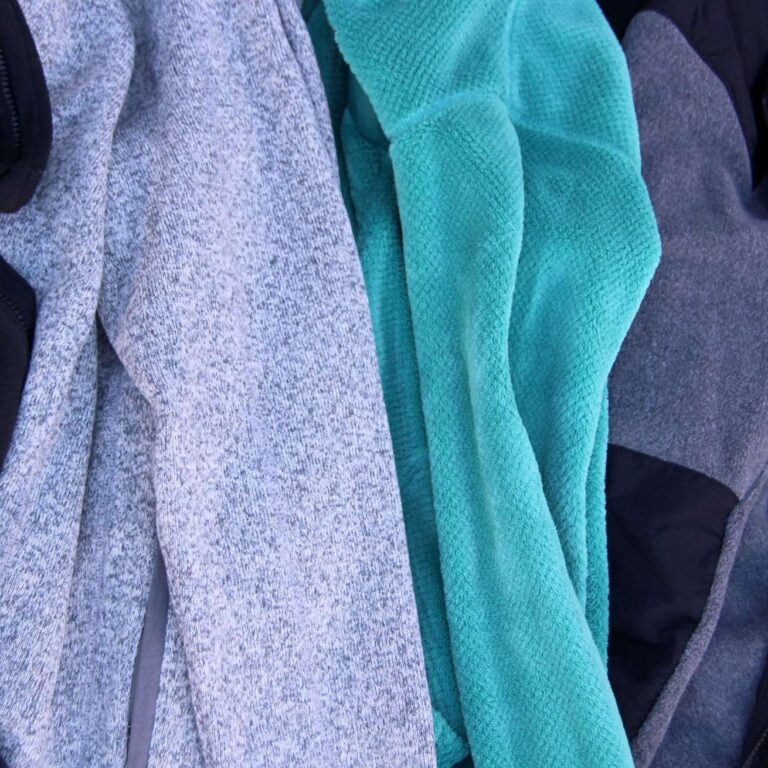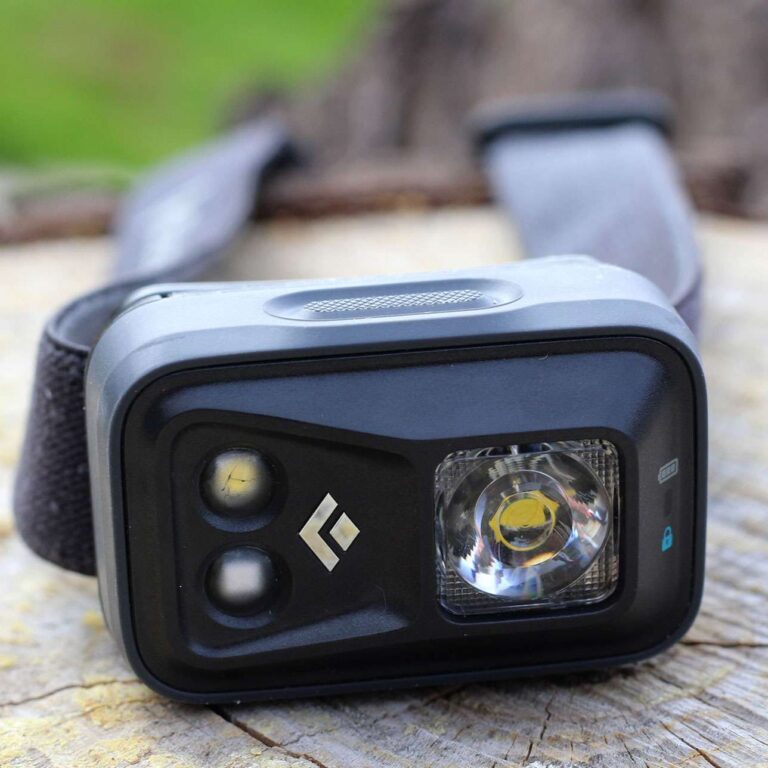Lights are one of the 10 essentials for any backpacking checklist, and headlamps are the best kind of light for most backpackers. You don't venture out into the wild without one because, in case you haven’t heard, there are no street lamps miles deep into a forest of towering pines. Yes, that's a Narnia reference. No, the light of Aslan is not like that of a headlamp. (His is an inner light.)
Headlamps are not just a wilderness tool, though. They are often recommended in any survival kit, whether it’s for a natural disaster, vehicle breakdown, or zombie apocalypse. They are small and lightweight, can typically (though not always) sit for long periods unused, and work without any extra electronics.
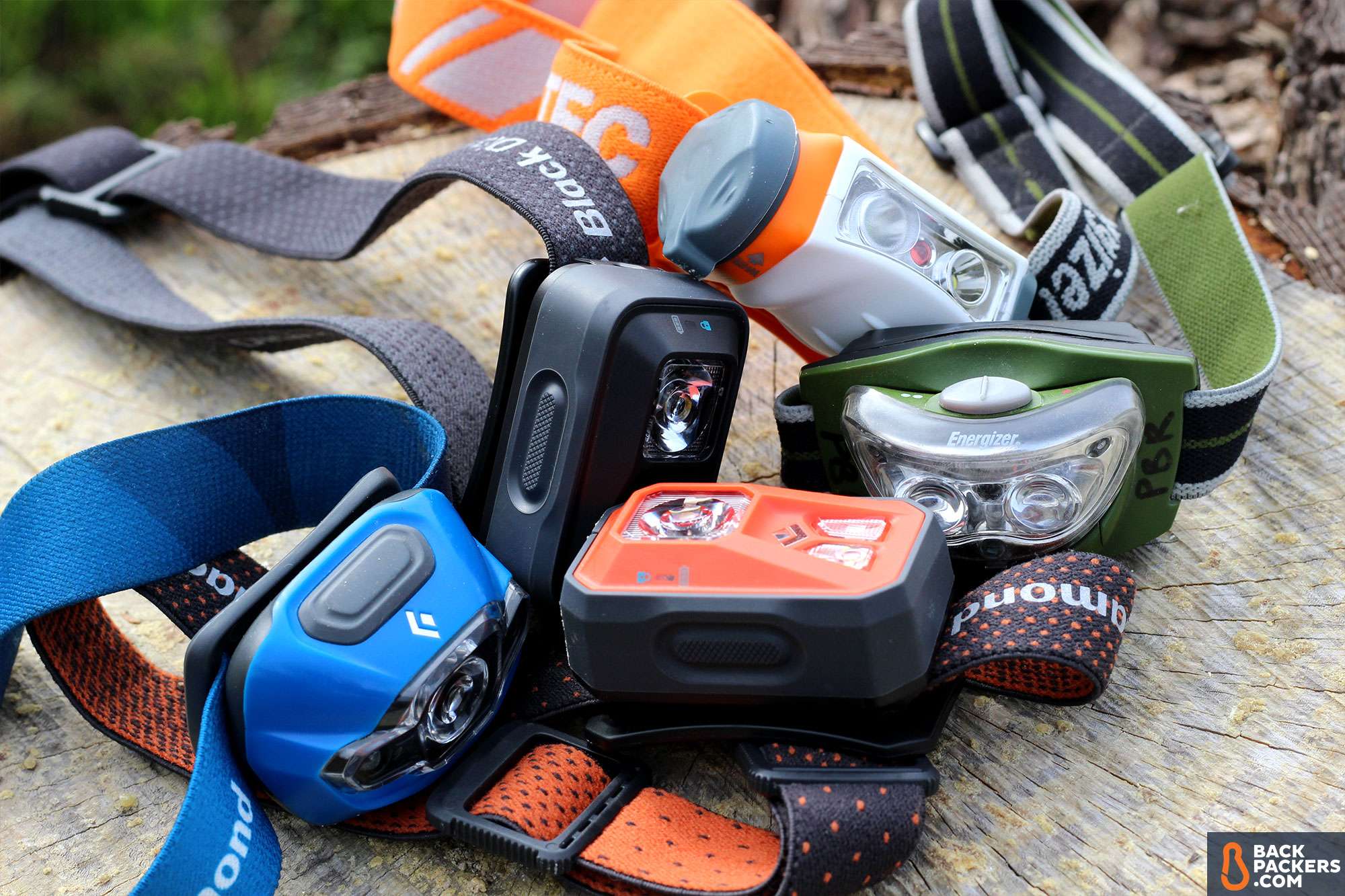
There are hundreds of uses for headlamps (coal mining was the first legitimate and patented use), but this guide is going to focus on headlamps for the general outdoors-person. This includes those who backpack miles into the wild, those who do it as lightly as possible, those who drive cars to predetermined campsites and hang out, and those who hike on trails in the city and in nature. We'll cover many questions and concerns, including what are lumens, headlamp battery life, IP ratings, and the concept of waterproof headlamps.
This guide (and the recommended gear on the website) will not focus on the more extreme situations where headlamps are needed in the outdoor world, like canyoneering, spelunking, mountaineering, or ice-climbing. These pursuits require much more powerful headlamps, and often have features I don’t consider necessary for the general user.
In case you're unfamiliar with the Backpackers.com Outdoor Guides: they are long! And thorough. See the topics covered below:
- Lighting Modes and Beam Types
- Lumens
- Beam Distance
- Battery Life
- Disclaimer
- Battery Type
- Water Resistance
- Extra Features
- Backpacker Types
What Makes a Good Headlamp?
This question is best answered by reading the entire guide below, then making an assessment as to your lighting needs based on activity, cost, and lighting desire. I suggest you read the entire guide (I did write it for you!), but here are some very basic ways to answer this question.
Consider these three elements:
1. Does it work reliably?
Your headlamp is worth nothing if it fails at the critical moment. Look to user-submitted reviews on popular outdoor websites (like this one!) for a general consensus on an individual headlamp model. This is an electronic device, after all. You can also bet a respected manufacturer will produce (or at least stand by) one of its products.
2. Is it bright enough for your needs?
Most headlamps we recommend, and most sold in outdoor stores, will be bright enough for most people. This includes basic brightness for finding items in your pack, setting up your tent, and trouble-shooting during the night. This does not include extended hours of trail-finding in the dead of night.
3. Does its construction make sense to you?
Any time you buy a piece of gear you should be confident and comfortable with how it operates. If you’re a one-button kind of person, get a headlamp with a single button. Some headlamps use a rotating wheel for mode shifts, some have only one color of light, and some have an external battery pack for increased comfort. Get a headlamp with the features you want.
With those basics laid out, let’s shine a light on the specifics of headlamps. (Prepare yourself for the lighthearted puns!)
Headlamp Lighting Modes and Beam Types
For me, the first factor in selecting a headlamp is what light modes and beam types are included in the unit. There are a huge number of variations on the market, but many modes stem from the central purpose of a headlamp: to light stuff up.
Headlamp Colors
The first element to consider is what light colors a headlamp has. White, red, and green are the most common, with white and red included on most models. Unless you want to start a rave in your tent — no judgement, I’ve done it — look for these basic colors:
White
The white light in a headlamp is a bit like the shoulder straps of a backpack — there’s not much use in the thing without its central element. Today, LEDs are the most common bulbs in headlamps, and nearly every headlamp on the market has a white LED first and foremost.
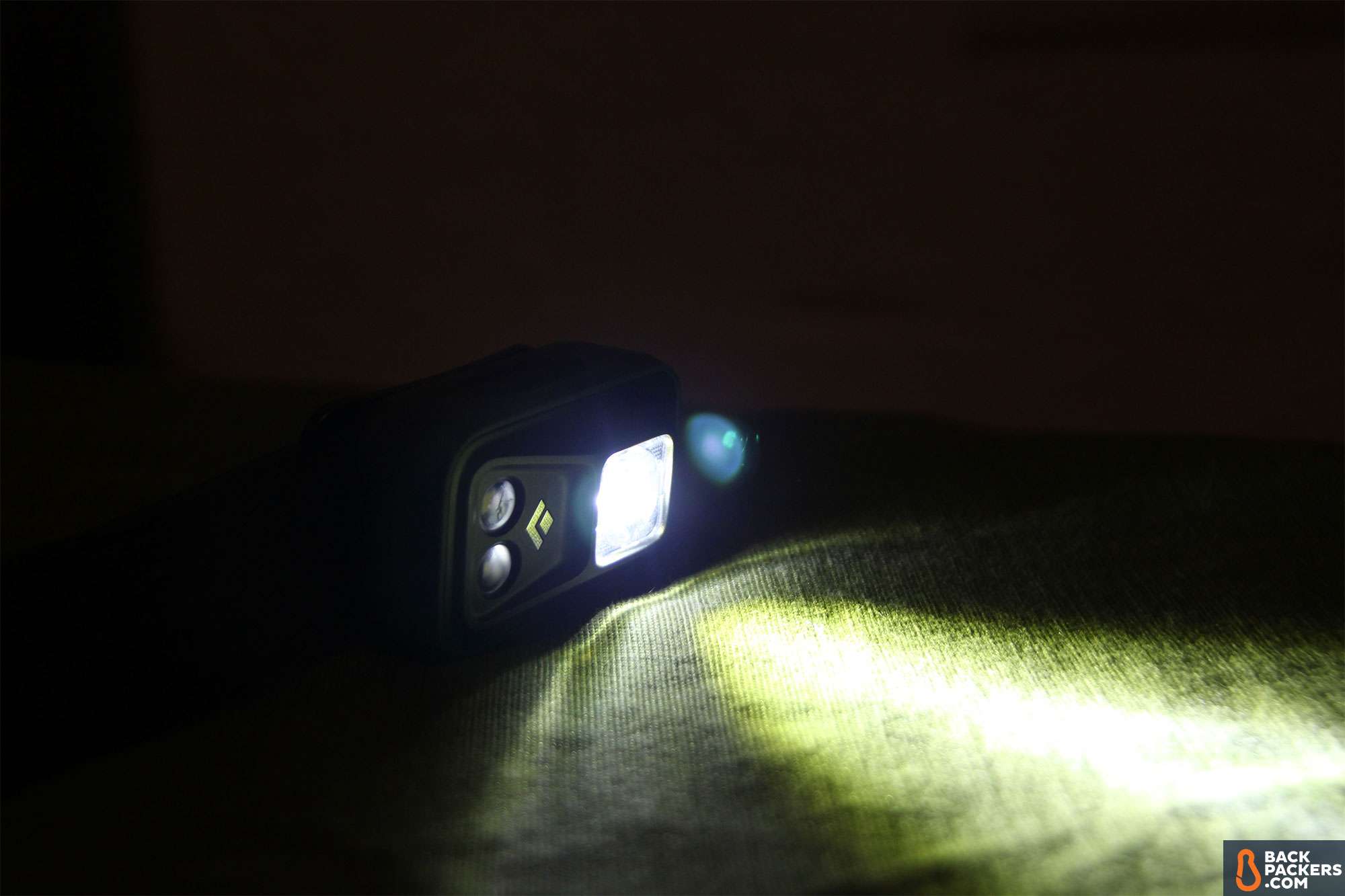
This allows you to see in the dark. Novel, right? A white light allows actual visibility, lighting up an area for extreme clarity.
Keep in mind that nearly every headlamp today uses LED bulbs and has a slightly different tint. If you can, shine a headlamp from a manufacturer to get a feel for the quality of the white light. Most are almost unnaturally white, and don’t mimic the sun. Some are more focused on providing natural white light. This is all done with tint, and can vary quite a bit.
White lights use up the battery fastest.
Red
The red light on a headlamp is a personal favorite. Not only does it cast an eerie, warm glow over your immediate area, but it allows you to navigate comfortably in the dark without waking anyone up.
Red lights are often used for very basic, close-at-hand tasks like brushing teeth, finding water right before bed, or finishing the final lines of your favorite wilderness novel. (For me, “Journey to the East” keeps things contemplative.)
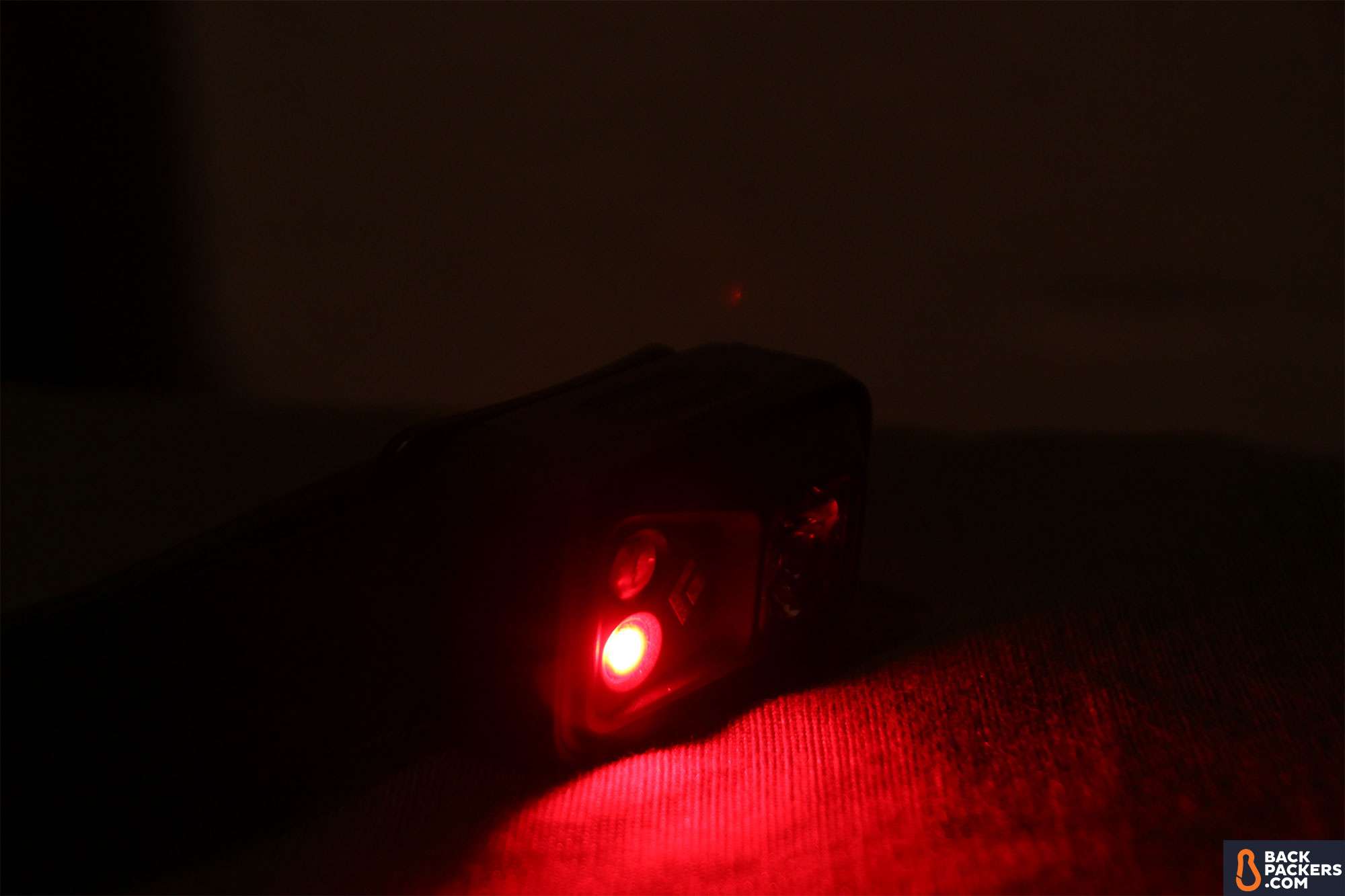
The red light is also much better on the eyes. Unlike white light, the level of red light in headlamps keeps your pupils from shrinking, meaning you won’t go blind the second you switch off the headlamp.
Obviously, the main drawback to a red light is that it doesn’t illuminate the space as well. Having both a red and white light is essential for me, but many go into the wild without a red light. Red lights also have a smaller impact on battery life than white lights.
Green
Green lights are less common on headlamps, but can be found in popular models, like the Black Diamond Storm. Green lights are generally better on the eyes than red or white lights, and people can keep them on for long periods of time.
Hunters have been known to use green, because it looks super cool, and because it allows them to better see the eyes of the animals they track in the dark.
Green light also preserves battery life when compared to white light, however, having both a green and red light feels like overkill to me.
Headlamp Beam Types
After light colors, the next major consideration in a headlamp is the beam type. You typically want a headlamp that is capable of multiple beam types: one for distance lighting and one for wide, close lighting.
Spot Beam (Focus)
The spot beam type, also known as focus, is used when you want to really light up the night. This beam type works for finding trails in the dark, scaring away a nosy bear, or illuminating your buddy’s midnight pee.
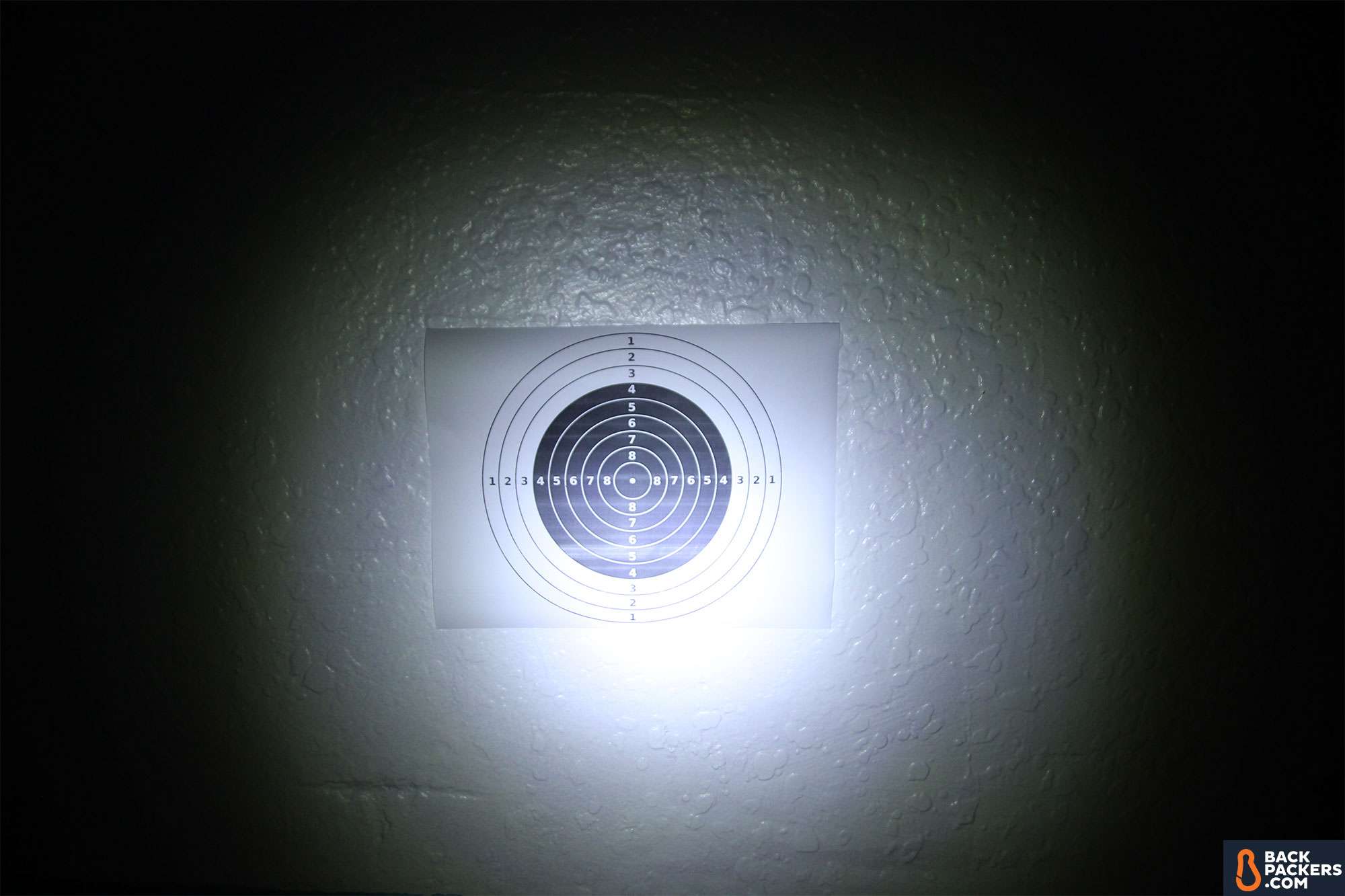
A solid spot can illuminate hundreds of feet, and appears as a focused beam of light on a single, distant point. Spot beams are always a white light.
Flood Beam (Wide)
A flood beam is the opposite of the spot. It provides a wide, close field of light that illuminates what’s around you. Not all headlamps have a flood beam, but having one can be incredibly helpful. Instead of clicking on your headlamp and blinding your campmates, you can provide an even field of close light that everyone can enjoy.
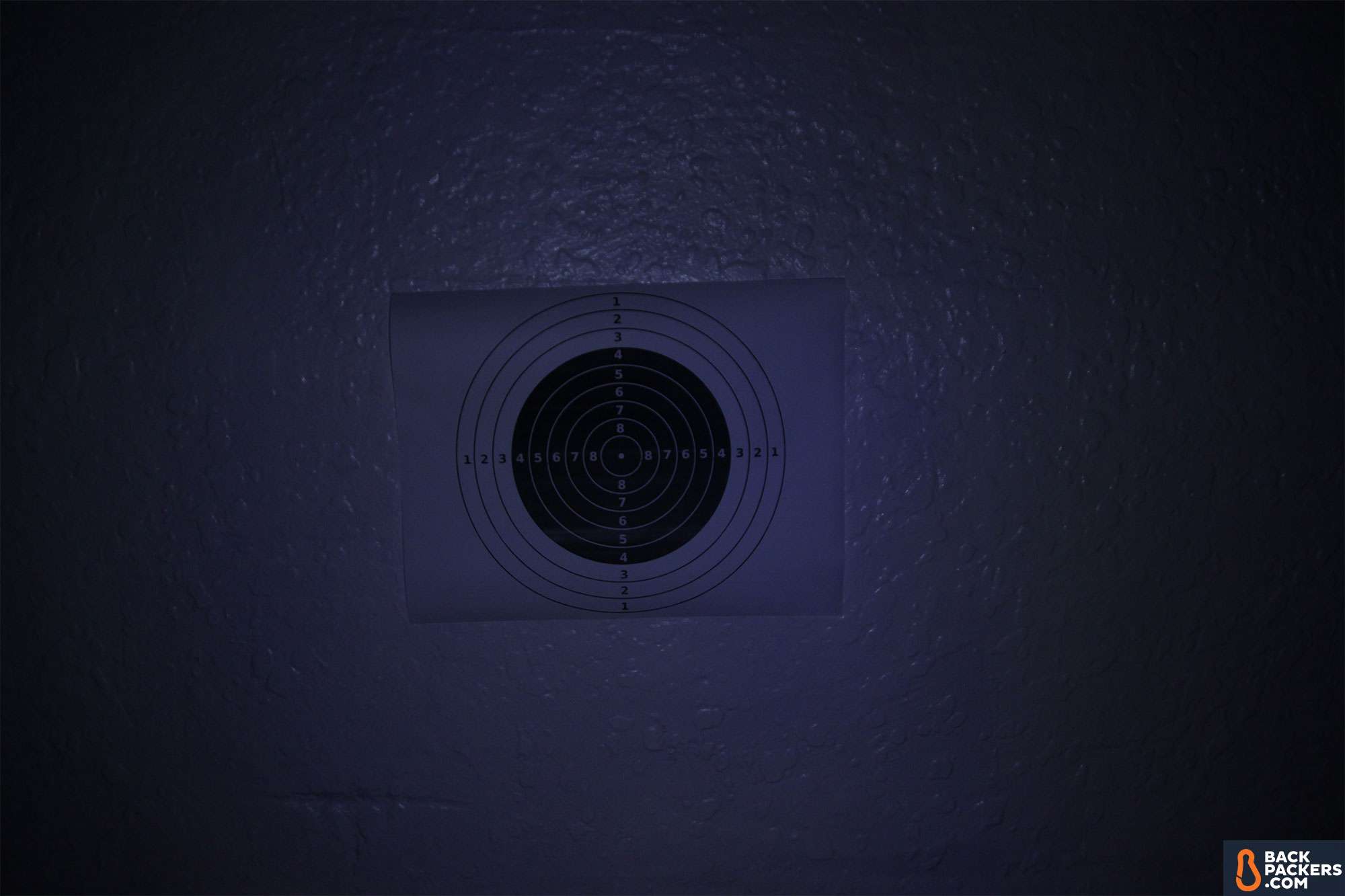
Typically the spot and flood modes are two different bulbs.
Strobe Mode
The final beam type in any headlamp worth its salt is a strobe. Yes, raves are paramount to any excellent outdoor adventure. Or, you know, survival. A strobe light is simply a blinking light, like you see on the backs of bikes at night.
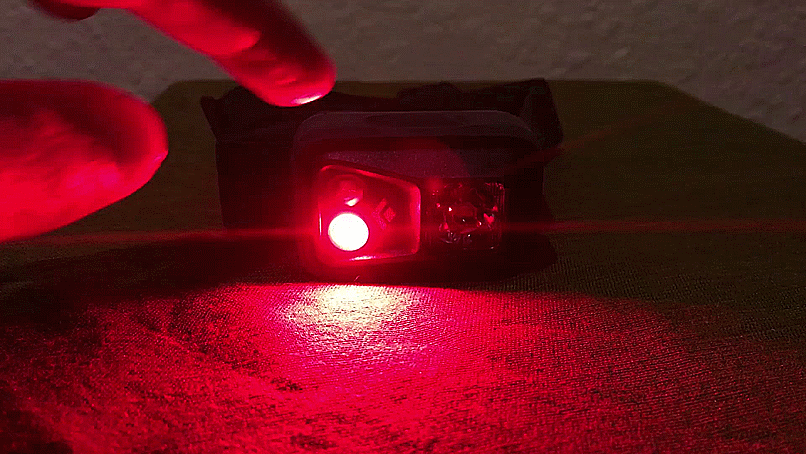
In the wilderness a strobe function helps to save you when lost, injured, or otherwise incapacitated. A red strobe, in specific, can be seen from very far away and is a universal distress signal. (Just after you’ve clicked out SOS via your Morse code transmitter.)
All kidding aside, the strobe function is a legitimate survival tool, and your headlamp should probably have one.
What Are Lumens?
When you’re actually looking to buy a headlamp, the first metric you will gravitate toward is the lumen. But what are lumens, exactly? The lumen, for those who need a technical definition, is the unit of luminous flux, as derived from the International System of Units (SI). Luminous flux measures how the human eye can see the light, rather than the wavelength of the light. There’s obviously a lot of complexity there — if you’re a light-monger, feel free to read more.
So, how many lumens do headlamps have? 100? 200? 500? Yes, and more.
Technology continues to improve — year after year the lumen count climbs like Conrad Anker in the ‘90’s. New models always have a significant jump in lumens, which means newer headlamps are typically brighter overall.

For most outdoor folk a lumen count between 100-200 will be more than sufficient. That is enough to search your pack, tent, and campsite at night, and to do some light trail-finding at a max setting.
Headlamp Lumens Are Misleading
While lumens are a basic unit that can guide you in your search, the stated claims are misleading. The gear-head’s brain is wired for specifications, and this basic number tells you, roughly, how bright the headlamp is going to be. But it’s also the number most prominently placed on the box of the headlamp, and therefore designed to specifically get your goat.
The thing is, the printed lumens on a box are the maximum lumens. Most headlamps decrease in lumen output once the batteries have less than 100% charge, meaning most of the time you will not get the maximum lumens out of your headlamp. This is a complex subject that ties in with other headlamp metrics outlined below.
Headlamp Beam Distance Explained
If lumens are the first number that pops out at you, beam distance will be the second. Often the two are placed side by side.

The above means that at the maximum lumen output the headlamp will throw a 80 meter beam.
This information is helpful when deciding how powerful you want your headlamp to be. If you have high lumens and a solid spot beam on your headlamp, you will be able to see far. This is useful for night-hiking, to check across your camp for critters, or in emergencies.
However, think about the majority of your headlamp use. Do you need be able to throw a beam that illuminates 80 meters (210 feet)? How often? Then, think about how, due to the above-discussed lumen degradation over time, you will not be able to see that far as your batteries get below 100%.
Headlamps are split between convenience and survival, so the prudent backpacker will find a headlamp with a solid beam distance (and carry a fresh set of batteries) in case they need to see far ahead.
Headlamp Battery Life Explained
As with all portable electronics, battery life is essential. A dead headlamp is worse than a piece of garbage in the backcountry — it implies function and does not deliver. A headlamp only becomes dead when the batteries drain down to nothing.
One component of this is the battery itself, but the more important issue is how long the headlamp can run, and how bright it will run until it dies. Headlamps vary widely in their battery life; the stated number of hours can be found on the specs sheet or box when bought new.

These numbers range anywhere from 4-200 hours. Quite a wide gap, right? In general you want a headlamp that has a very long battery life; one that will shine bright for hours of use. With major manufacturers’ headlamps, the battery life tends to be decent. You can rest assured that on a low light setting your headlamp will function for a long time. You can also believe the max times stated on the boxes as a decent gauge for how long the headlamp will truly last.
However!
Headlamp Specifications Are Not Entirely Accurate
It’s time for the Disclaimer section of the guide. The part where I piece together all the mounting evidence against headlamp manufacturers into duping consumers. It's not an overt lie, but rather many small, white lies so as to make the products shine unnaturally bright on the rack.
As I’ve said, the lumens on a box or package are the maximum lumens, which can only be achieved in the first few minutes of a battery's life. This also affects the beam distance, because once the lumen count goes down, the beam distance will also go down.
The final piece of this sad puzzle is that the battery life claims on the box — often in the 150-200 hour range — are not correlated with the maximum lumens or beam distance, even though they appear next to them visually. Most headlamps (not all) lose their potency as time goes on: the light is less bright at 50% than it was at 75%, and so on.
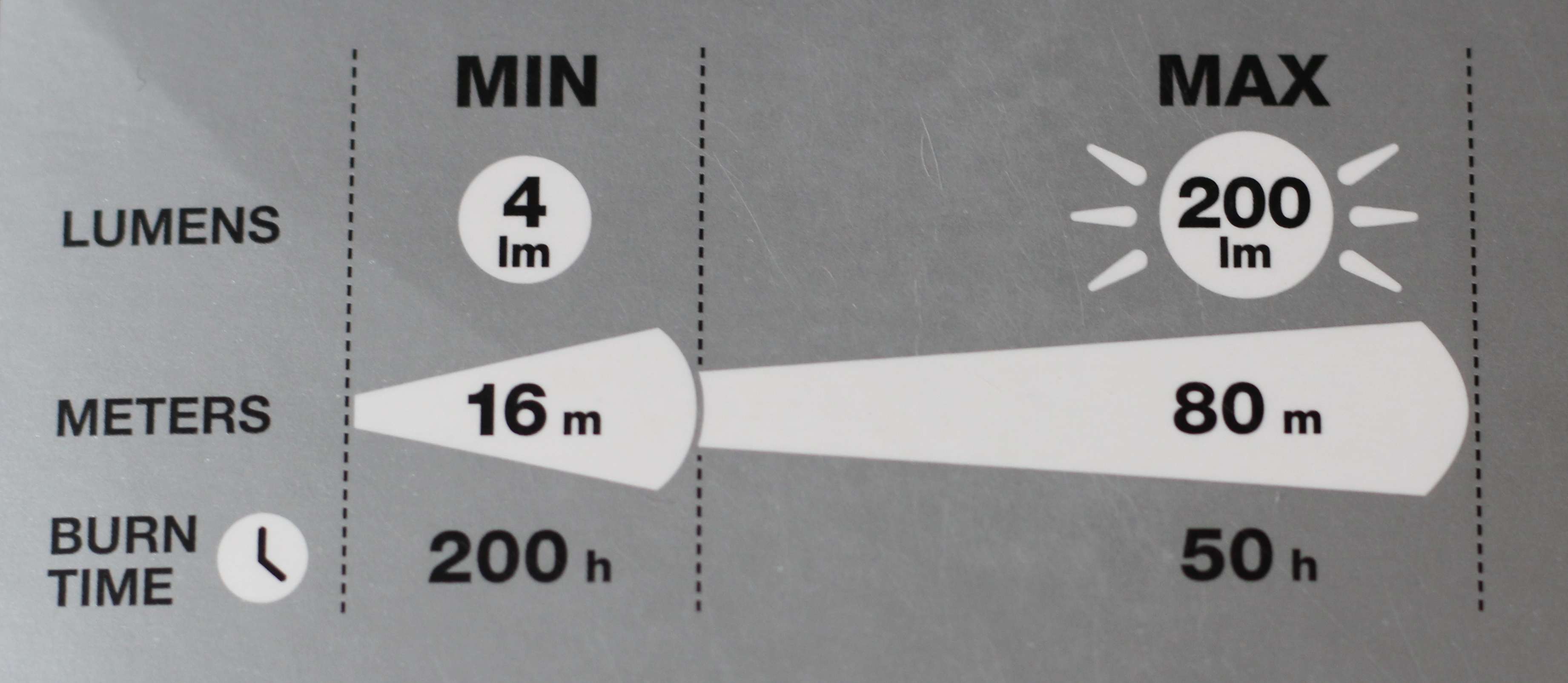
The number of hours on a box indicates how long the battery will last as long as the light outputs that of the “moonlight standard.” This is the light given off by the moon a clear night. (That's a real term and measurement, not another Narnia reference.) These measurements get more complex, and it's an issue that is well-documented in the industry. OutdoorGearLab has explored the depths of this — see their article for further details.
Be Sensible When Reading Headlamp Specs
This misinformation means that you, the consumer, have to be sensible. There’s no way a headlamp will give off 250 lumens at 80 meters for 200 hours (or even 50 hours, as the above image shows). It’s not possible. If for some reason it appears that way, it is untrue. The lumen count and beam distance will go down, though the light will stay on for 50 hours on a “high” setting.
The way manufacturers have gotten better at this — but not perfect! — is to show battery life in correlation to lumens and meters visually. Typically this isn’t on the box; you have to dig into the website specifications or user manual to understand.

Manufacturers like Black Diamond, Petzl, and Princeton Tec all offer the information if you look deeply, but not initially. Other manufacturers, like Zebralight, are very up-front about their specifications, but haven’t figured out how to present them in an easily readable fashion.
Learn to take initial claims with a grain of salt, then check the actual specifications on the manufacturer's website to get a better gauge of how the headlamp will function over the life of the battery.
Headlamp Battery Types
Battery life is one thing, batteries are another. It’s wise to carry spare batteries if you’re heading into the wilderness, but at least you should know the practical battery life of your headlamp and if you have a full charge (or new) batteries installed.
Headlamps take a few kinds of batteries. See the most common below.
AAA Batteries
The most common batteries for use in headlamps are AAA. You probably have a few of these laying around the house — they're small, hold an OK charge, and can be found in most general stores in the U.S.
Due to their size, AAA batteries are ideal for headlamps. You’ll find headlamps that use two, three, or four AAA batteries.
AA Batteries
There are some headlamps that use AA batteries, but it’s more common with lanterns and heavy-duty flashlights. That said, a AA battery holds a much greater charge than a single AAA (or even two AAAs), and therefore gearheads who obsess over lights love them in headlamps.
You can find headlamps that use one or two AA batteries; one AA is the sweet spot, as it’s easy to carry a spare and keeps your overall weight down.
Alkaline vs. Nickel-Metal Hydride (NiMH)
AA and AAA batteries are most commonly offered today in alkaline or Nickel-Metal Hydride (NiMH) construction.
Alkaline batteries can be used once, are cheaper, and hold their charge for longer.
NiMH are rechargeable, more expensive, and don’t offer as much power as alkaline batteries when used in a headlamp.
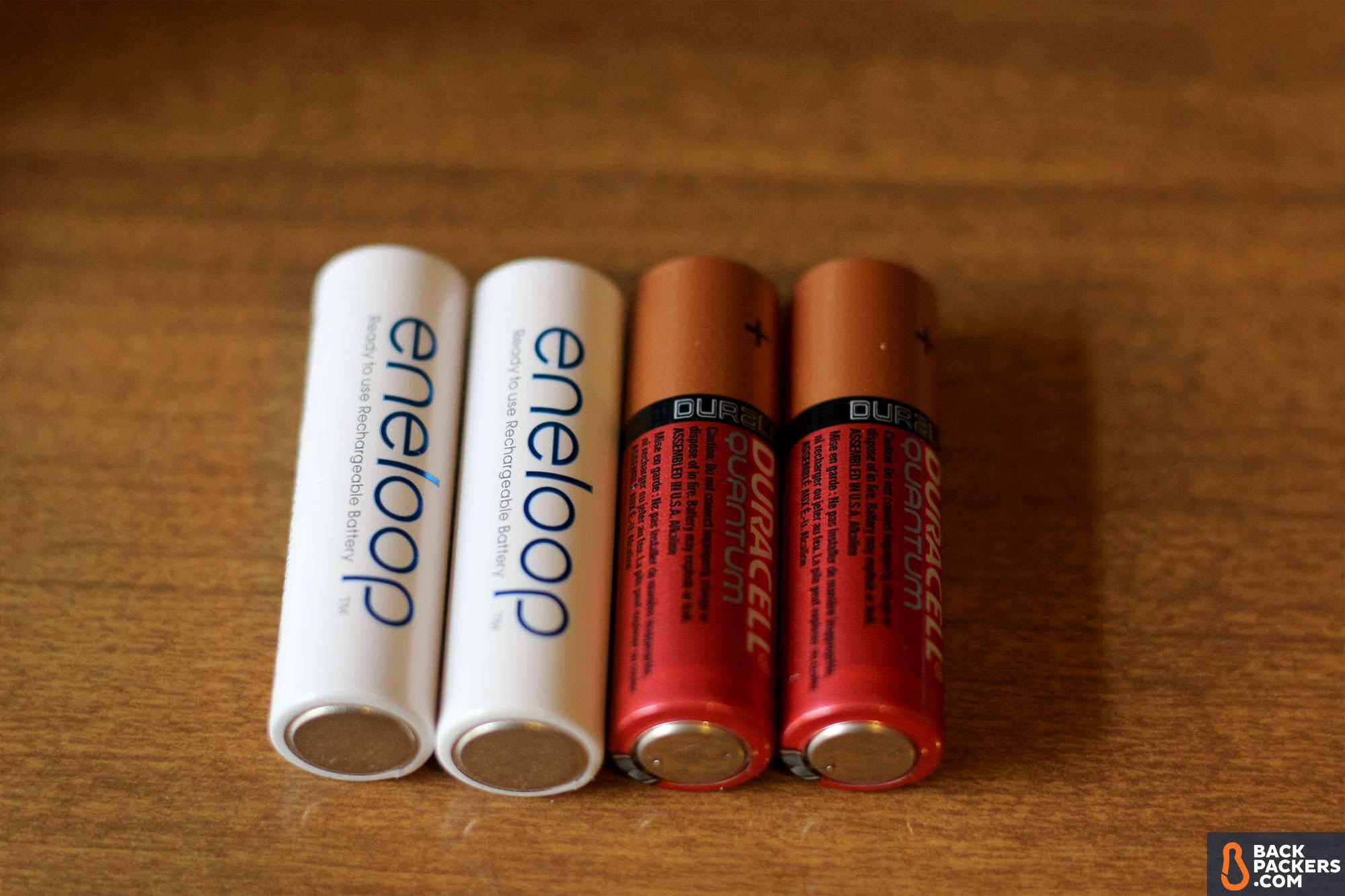
If your headlamp accepts AAAs or AAs you will be able to use both Alkaline or NiMH batteries. You have to use either alkaline or NiMH (you can't mix and match). It's also best to use batteries that all have a similar charge; this allows even, consistent light over a long period of time.
The environment is of great importance and concern to the outdoor industry — if you can afford it, consider getting a set of NiMH batteries. They will last longer and create far less waste overall than alkaline.
Lithium Ion
The new kid on the block is the lithium ion battery. Typically these are also rechargeable batteries, but they do not yet come in a AAA or AA form factor (called “cylindrical” batteries). Lithium ion batteries are most familiar to you in the form of your smartphone — you plug in the device via USB cable, the battery gets charged, and you’re all set.
Fancier headlamps have lithium ion batteries embedded inside. This works well in specific use-cases, especially for those who are close to power outlets. In general the adoption of lithium ion batteries into headlamps has been slow, precisely because you are nowhere near a power outlet. This is changing as solar and battery bank technology gets better.
The headlamps that do use lithium ion batteries are like your smart phone — they plug in via USB, often have battery indicators, and can’t physically be removed from the headlamp.
The biggest advantage of lithium ion over alkaline or NiMH batteries is that their charge capacity degrades very slightly over time. Even a rechargeable NiMH battery has a finite number of uses (often 1000-2000 uses), but a lithium ion battery lasts much longer.
The disadvantage, of course, is not being able to carry a backup and not being able to fix the battery if it breaks. The former is solved with a portable battery bank or solar charger in the field, the latter by a solid manufacturer warranty or proper care of the unit.
Still, AA and AAA battery-based headlamps reign supreme.
Finally, I want to note that the above is not a technical conversation on batteries. These are complicated things that charge our world, and the goal in this Guide is not to educate you fully on battery technology, but to understand their most practical application for headlamps. To learn a great deal more about batteries, check out REI’s guide.
Waterproof Headlamps
A headlamp must be able to resist water. There is nothing worse than losing your way in the rain, losing your light to a river, or dropping the headlamp in an open pot of water. We’ve all done it. No need to worry — your headlamp has decent water resistance, right?

Due to the electronic nature of headlamps, water is an obvious enemy. If a manufacturer cares about longevity of use it will include housing that prevents easy corruption of the electrical components.
This is measured by the IP Code.
What Are Headlamp IP Ratings?
The IP Code is the International Protection Marking — also called the Ingress Protection Marking — which is a formal body that “classifies and rates the degree of protection provided against intrusion for dust, accidental contact, and water by mechanical casings and electrical enclosures.” Obviously it’s a massive body that issues ratings for many products in consumer society; headlamps are just one.
The code is a literal set of numbers that denote how much dust or water an object can take. The code looks like this:
IPXY
IP — This is standard, and just marks that it’s an IP code.
X — This will be a number from 0-6 that denotes the solid particle protection. Often this remains an “X” for headlamps because solid particle ingress is not tested.
Y — This will be a number from 0-9 that denotes the harmful ingress of water into the object. The Y is most important for headlamps, and you’ll see headlamps with an IP of 4, 7, and sometimes 8.
For quick reference, see below:
IPX4 — Protects against water splashing against the enclosure from any direction. Includes spraying, but not submersion. Good in rain and functional overall. The term “weather resistance” is used in marketing talk for IPX4.
IPX7 or IP67 — The “7” here means the headlamp is protected against water when submerged up to 1 meter (3 feet) for 30 minutes. Yes, this means you can drop a headlamp in water by accident, grab it, and it should be alright. If there’s a “6” in place of the “X” it means the headlamp is also completely protected against dust.
IPX8 — Protects against continuous submersion in water up to 1.1 meters (a bit more than 3 feet). The main difference between 8 and 7 is that headlamps with 8 may actually let water in, but the water won’t stop it from operating. An even better “waterproof” rating.

Most quality headlamps have at least IPX4, and that will satisfy most users. If you want to be extremely protected from water, live in precipitous areas, or often go swimming with your headlamp, try to find one with IPX7 or IPX8.
Extra Features on Headlamps
The above is a lengthy (yet enjoyable!) dive into everything that makes a headlamp a headlamp. Below are a few clutch features. Make sure you know the features you want in a headlamp, and then how to use them once you have them.
Headlamps that Dim Are Helpful
Some headlamps, especially Black Diamond models, have the ability to dim. This is an extremely useful feature if it’s easy to use. Dimming allows you to get an accurate light level for the task at hand, rather than the predetermined light levels from a manufacturer.
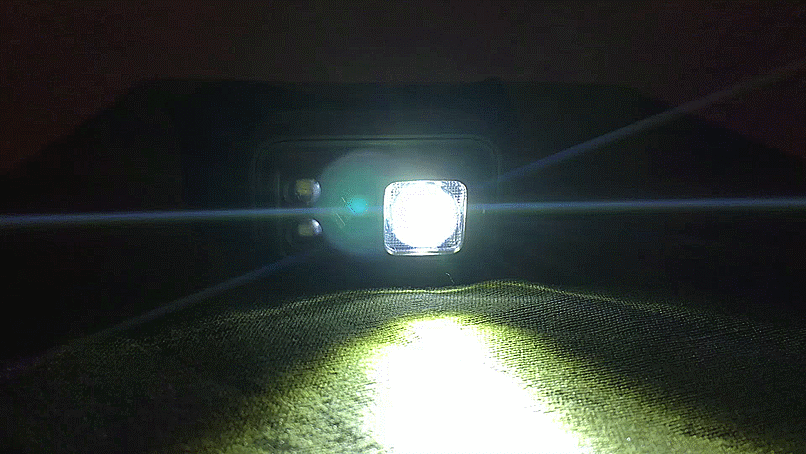
When used correctly, dimming increases your battery life over time and keeps your eyes happy.
Be Wary of Boost Modes
Many headlamps today have “Boost” capabilities. This is a super high-powered light option, and is often the mode that is advertised as the maximum lumen capacity on the box.

Boost modes are great for emergencies or moments when you need a brilliant wave of light, but should not be used for extended lengths of time because it will drain the battery. If a headlamp has a spot and flood light the boost is often a combination of both at once.
Tilt is Important for Headlamps
When it comes to comfort and usability, a headlamp that tilts is very handy. Sometimes you don’t want light beamed straight ahead at eye level — you want it angled down to the ground or mid-way to the rock that the raccoon is hissing at you from.

Many headlamps tilt on a swivel. Some have predetermined tilt settings, some can rotate and stop anywhere in a full arc. I’ve gotten so used to tilt capable headlamps that it's frustrating when they don't have the option!
A Headlamp Battery Life Indicator is Handy
A battery life indicator is not necessary, but certainly handy. Typically it's a small light that turns on to show you what level the battery is at — green means lots of charge, orange means running out, and red means low. (Those colors aren't always accurate, but often are.)
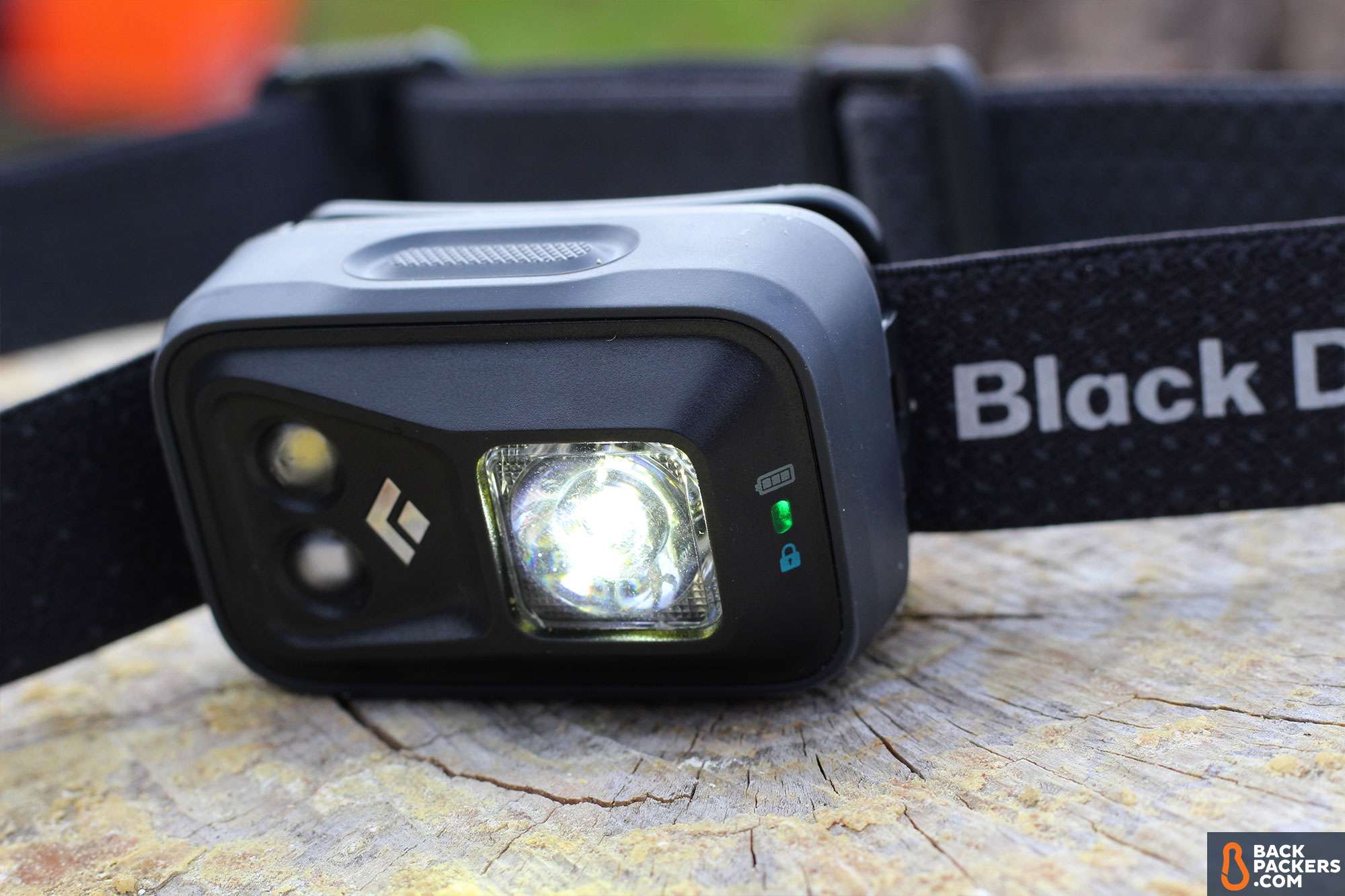
It's always smart to check the battery indicator before you pack to see if you need new batteries or another charge.
Get a Headlamp with an On/Off Switch
Another feature that’s all about battery life: the On/Off switch is incredibly handy for wilderness backpackers. It allows you to make sure your headlamp won’t turn on in your pack during the hike, thereby saving battery life.
Some On/Off switches actually disconnect the battery leads from the headlamp as well, thereby reducing battery drain.
Headlamp Headbands
Finally, there is the headband. Most headbands from major manufacturers today are comfy and stretchy. You’ll want a headband to be easily adjustable to the right length. If you can’t get it to fit correctly on your head, it will either fall off or give you a headache.
Petzl and other manufactures make their headbands removable and washable, which is nice for active users who have poured hours of sweat into them.
There are two types of headbands:
- Two-band wrap-around. This is most common and provides a casual, yet comfortable fit.
- Three-band over the head wrap-around. This adds an additional band that goes over the head, which secures the light. This is more often used by extreme sports enthusiasts or construction professionals, but can be useful if you’re very active and using a headlamp.
What Are Headlamps Made Out Of?
In the outdoor world high quality is best, yet when it comes to headlamp construction, plastic is still the most used material. This is true despite other, lighter materials available, like aluminum. The big manufacturers use plastic to house the batteries and LED bulbs. Not all plastics are equal, and some headlamps have more durable plastics than others.
The most important thing is that the material construction is solid enough so as to keep the headlamp from breaking after a fall — because you will drop yours at some point.
Backpacker Types
As with all of our Outdoor Guides, we recommend specific headlamps for our different Backpacker Types. We believe these recommendations, and the general approach to how we select them, will result in you getting the headlamp you need and want.
Wilderness Backpacker
Headlamps for the Wilderness Backpacker are essential. Very few people head into the wilderness without one, so it’s important to have it on your pack list. Depending on your budget, these are some features we look for in a Wilderness Backpacker headlamp: easy tilt, long battery life, a powerful light when needed, a red light, and a lightweight package.
Our recommended headlamps typically have all of these, and also work for any light rain conditions should you encounter inclement weather.
Ultralight Backpacker
The Ultralight Backpacker follows closely on the heels of the Wilderness Backpacker when it comes headlamps (and kind of everything), but compromises functionality for weight. This means the headlamp needs to be super lightweight, have a longer battery life (less spare batteries on your trip), and get by just with what’s needed. We also recommend headlamps that are more technical because Ultralight Backpackers tend to be dedicated gearheads.
The headlamps for the Ultralight Backpacker each have their own unique purpose and skill-set, so make sure to pick the one that fits best with your needs.
Day Hiker
Day Hikers have the luxury of sleeping in their beds at night, often next to a wall outlet and the swarm of electricity society provides. Also, the “day” in Day Hiker sort of implies you’ll be trekking with the sun up, making a headlamp less necessary. This means the requirements for a headlamp are different, and turns them into an backup piece of kit. Extreme battery life is not as important, a red light is not necessary, and weight is not critical. However, those are still handy features to have.
The headlamps we recommend for the Day Hiker range from providing bare-bones necessity light to higher-end functionality meant for those who really like to day hike, even into the night, often at high speeds.
Car Camper
The Car Camper’s headlamp is usually used in concert with a big ol’ lantern. This means it is not a survival piece of gear (unless the the zombie apocalypse comes while you’re out there), but rather a nicety for finding items in your tent, lighting your way to the bathroom, or just as a backup.
Due to this we recommend headlamps similar to the Day Hiker, with the higher end range being rechargeable and practical for wilderness use as well.
Urban Hiker
Do Urban Hikers need a headlamp? City lights, car lights, and the ambient light of civilization typically keep you out of the dark. We believe Urban Hikers need headlamps as a backup for emergency survival (like, in their glove box), as a tool around the house, and for occasional late-night runs.
Our recommended headlamps for Urban Hikers are the same as the Day Hiker, making your transition between the trail, back to the car, and into the city seamless.
Affiliate Policy: We support the hours that go into our reviews, testing, and guides through affiliate commissions on purchases made through links in this article.


